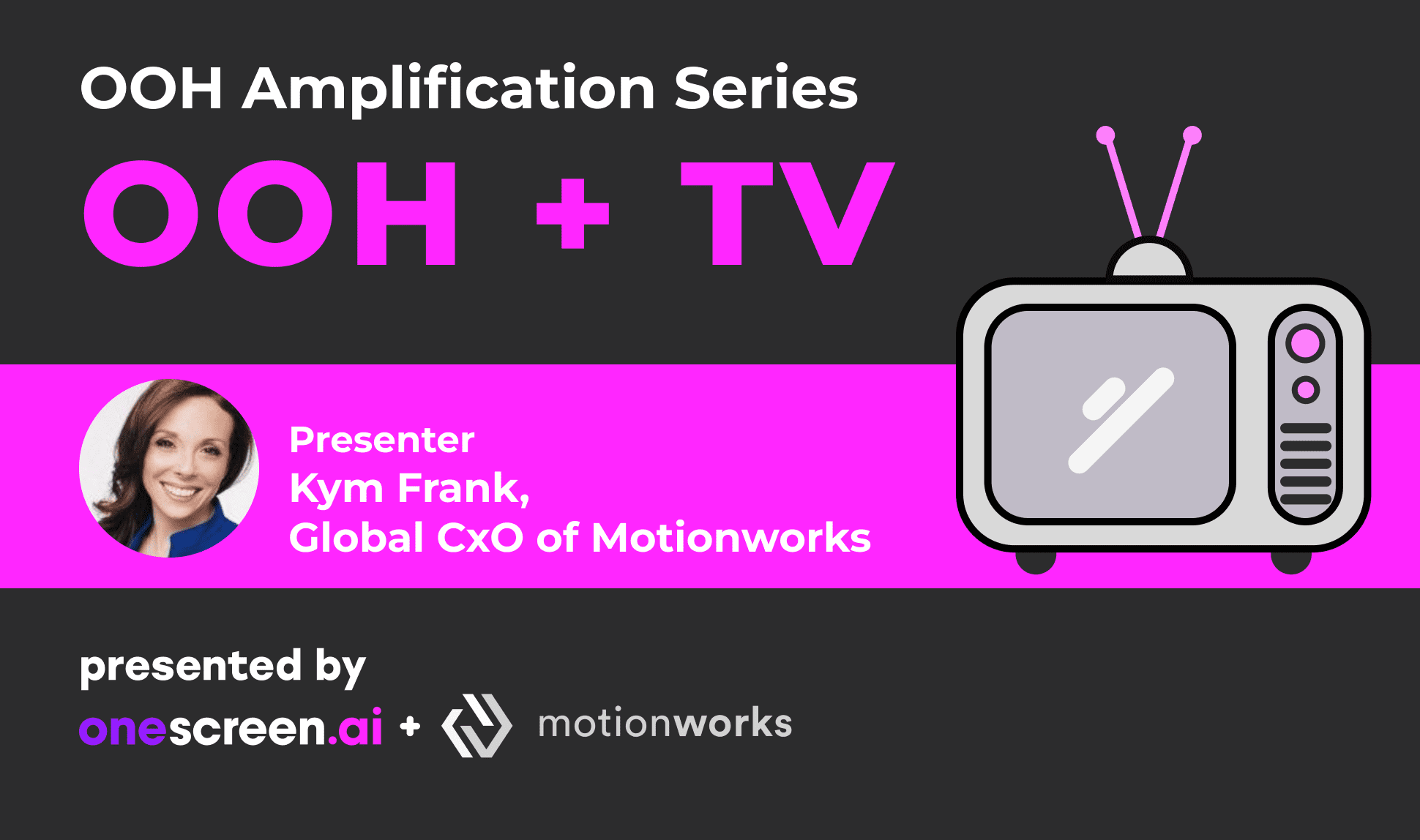Out-of-home advertising is known to extend reach and amplify campaigns when combined with other channels. But how can you put it to work to reach your audience more effectively?
OneScreen.ai is excited to team up with Kym Frank, Global CxO at Motionworks, to present a series of metrics-based webinars on using out-of-home to amplify other advertising channels.
You don’t want to miss her insight and advice. Kym speaks from first-hand experience across every major media channel, and she’s an expert on audience research.
In our first webinar, Kym discusses how OOH can amplify TV. You can watch the webinar to get the details, but here’s a preview of what you’ll learn.
Measuring TV reach isn’t as simple as you think
Ad spend on TV is declining, but it is still monumental. Meanwhile, out-of-home ad spend is steadily rising. Marketers know that consumers are not only spending more time out of home, they are deliberately taking note of their surroundings, especially OOH advertising.
Still, TV is a big channel, and there is no reason to consider TV and OOH as mutually exclusive or as competitors. Kym suggests they are more like friend-petitors. In fact, TV, online and social entities themselves spend a lot of money on OOH advertising.
We understand intuitively that multi-channel campaigns are more powerful, but this chart drives home the fact that using more delivers more.

Surprisingly, however, most advertisers use only one or two channels at a time. That means adding OOH can make a big impact.
TV advertisers face three key challenges
1. Fragmentation
At-home TV audiences are overwhelmed with viewing options that they mostly ignore. Most watch only 4 or 5 channels. Unfortunately for advertisers, everyone watches a different 4 or 5, making it hard to reach your target audience.
Trying to make up for that with greater frequency can be counter-productive. The first exposure to an ad has the greatest impact on ROI, and that improves with up to 5 exposures.
Then the impact actually goes negative. At that point, you’re wasting budget and sending the wrong message.
2. Cord-cutting
Kym says only about half of households even watch traditional TV any more, therefore you can be sure half your desired audience will never see your TV ad.
3. Audience bias
Neilson still claims viewers watch 3.5 hours of TV a day. In reality, 50+ viewers are driving up that average. The 18-34 age group watches less than one hour. There’s another missed opportunity that leads to misspent budget.
OOH fills in the gaps
It reaches audiences who either don’t watch traditional TV at all or watch minimally.
You can actually geo-target cord-cutters by using maps that show where they are.

You can also use Geopath tools to target both cord-cutters and “light quintile” TV users who are less likely to see your ad there.
Kym explains how in the webinar.
And those young adults who aren’t watching TV much? They drive more than older age groups. They’re on the move and on the road – exactly the right places to reach them with OOH.
TV + OOH is a match made in heaven
So says Kym Frank, and we know you’ll agree. In the next webinar in this series, Kym explains how to use OOH to amplify radio advertising.
